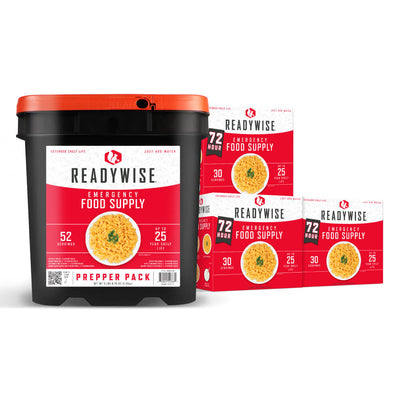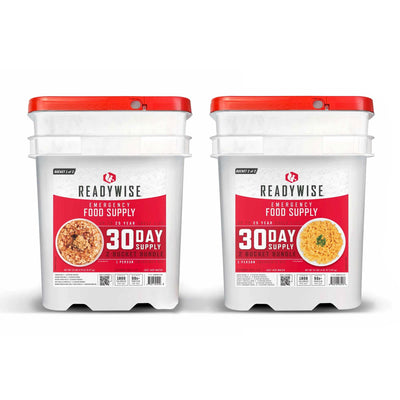3 Must-Know Space Saving Tips for Optimizing Your Emergency Shelter
With reports indicating that the effects of climate change are likely to cause more frequent and more extreme weather, it pays for homeowners to be prepared for everything Mother Nature has in store.
Making the decision to create a disaster plan and designate a safe space to hunker down in is just the first step towards preparing your home - you then need to think about how you use the space inside to ensure you have everything you need, too. To help you on your way to creating a functional and comfortable disaster shelter that’s primed for use at any given moment, we’ll be sharing some top space-saving tips to utilize every inch of the room effectively.
Utilize vertical space
In most cases, storm shelters are modestly sized structures that are designed as a temporary safe haven for when extreme weather strikes, which means floor space is often limited. However, this doesn’t mean you can’t make use of vertical space to ensure your emergency bunker is well-equipped for a potentially longer stay.
To do this effectively, consider installing floor-to-ceiling garage shelving units on one wall. With shallow shelves that span the whole height of the room, you’ll have ample surface space to store emergency supplies such as water, dried food, medical supplies, and blankets without eating into too much floor space.
This style of open shelving will also help keep the area organized at all times and provide a quick visual check on your emergency supplies inventory ahead of tornado season. You can even incorporate wooden crates, plastic containers, or metal boxes to categorize your supplies further and keep them better protected from dust and moisture.
If you don’t have the space for a full shelving unit, don’t worry. There’s still sufficient ceiling space for hanging baskets or raised shelves just above head height that could be the perfect alternative for storing those much-needed essentials like flashlights and a wireless radio.
Make use of wasted space
Taking refuge in your storm shelter can be a stressful and anxious time, so you should try to create a calming and comfortable environment to help keep everyone as relaxed as they can be while hunkering down during a storm. With this in mind, you should consider the addition of some seating.
To ensure your seating doesn’t encroach too much on your floor space, one idea is to opt for a built-in bench that runs along one or two walls in your shelter (depending on its size and capacity, of course). This design not only takes up the least amount of floor space, but it also means you can utilize the wasted space underneath for added storage that’s easily accessible - perfect for heavier items like a water container.
Whether you go all out and install customized drawers that slot seamlessly into the design or simply use plastic containers and bins to give you that much-needed storage, finding ways to fill unused areas like this will help you optimize storage and organization for added comfort and convenience.
For those who have an underground shelter with steps down into the bunker, you may also find disused space here (provided it’s easily accessible) that’s primed for stacking plastic containers loaded with supplies. Some modern designs come with removable steps to allow for easier access to the space behind them, making life a whole lot simpler.
Opt for multifunctional furniture
Just as you would in your home, you can also gain extra storage space with multi-functional furniture like wooden trunks and ottomans that have hollowed- out space underneath for storing items, as well as a solid top that can double up as a seating area or a table.
While these pieces of furniture are often bulkier than customized built-in benches, they still provide the ideal place for storing blankets, cushions, spare clothes, and any other essentials you’ll need during a severe storm.
Opting for multi-functional pieces like an ottoman chest can also be a more affordable option for furnishing your storm shelter and they come with the added benefit of being portable. This means you can move them around the room as needed and even transport them back inside your home when tornado season has subsided.
Building a storm shelter is becoming an increasingly important part of disaster planning as we begin to face the reality that extreme weather is expected to become a more frequent occurrence. However, to design a refuge that’s safe, secure, and well-equipped, it’s essential to make the best use of the space available. With the tips above, we hope you’ll now have the right know-how to do this - allowing you to design a space that combines both functionality and comfort.
Author bio:
Tom Brialey is the Founder and Director of Action Storage Marketplace, which adopts his philosophy that, in addition to the highest quality products, you must also provide the highest standard of service to your customers in order to succeed. That’s why it’s Tom’s mission to provide expert support 100% of the way.
















































































